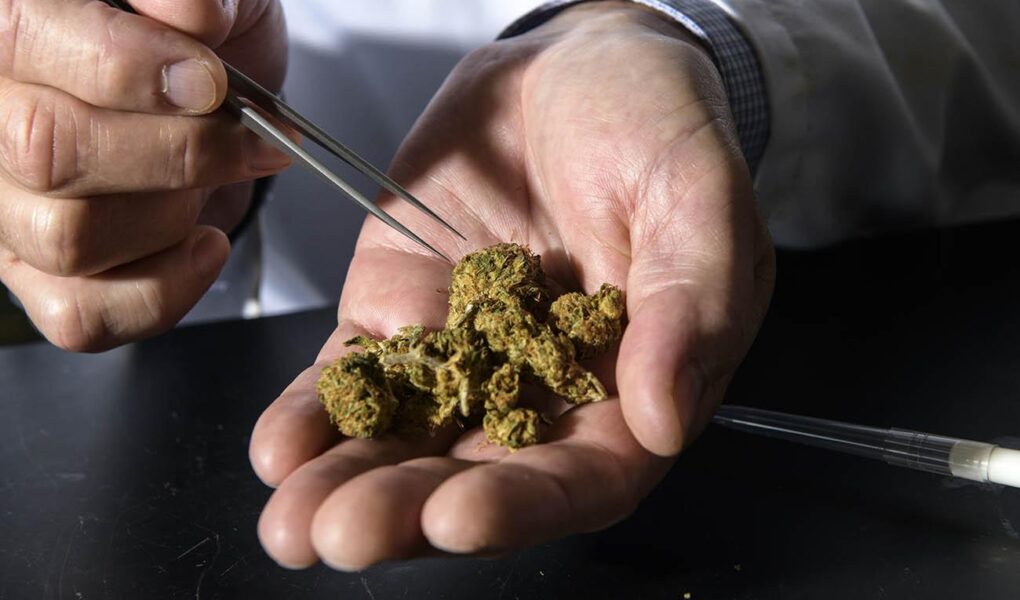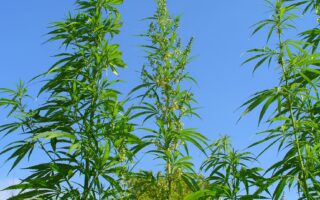Unraveling the Mysteries of Cannabis: The Enigmatic Presence of Drugs in Weed
As the dawn of a new era in the realm of cannabis unfolds, the conversation surrounding marijuana has evolved, embracing a spectrum of complexities that go beyond mere recreational use. Once shrouded in stigma, the plant has emerged at the forefront of scientific research, revealing a fascinating interplay of cannabinoids, terpenes, and other compounds that contribute to its myriad effects. Among these compounds, drugs found within the cannabis plant itself beckon us to explore the rich tapestry of their nature, purpose, and implications. In this article, we delve into the intricacies of what constitutes a “drug in weed,” examining the legitimate science behind its medicinal properties, the potential for misuse, and the ongoing discourse that shapes our understanding of this multifaceted botanical wonder. Join us as we embark on a journey to demystify the role of drugs within cannabis, navigating the fine line between healing and harm while uncovering the potential that lies within this ancient yet contemporary phenomenon.
Table of Contents
- Understanding the Chemical Landscape of Cannabis
- Exploring the Therapeutic Potential of Cannabinoids
- Addressing the Risks: Navigating the Side Effects of Cannabis Use
- Guidelines for Responsible Consumption and Selection of Cannabis Products
- Q&A
- To Wrap It Up
Understanding the Chemical Landscape of Cannabis
The chemical landscape of cannabis is complex, shaped by various compounds that work in harmony to create its unique effects. The plant contains over 400 chemical compounds, predominantly categorized into cannabinoids, terpenes, and flavonoids. Among the cannabinoids, the most well-known are tetrahydrocannabinol (THC) and cannabidiol (CBD), each offering distinct therapeutic benefits and psychoactive properties. Terpenes, aromatic compounds found in many plants, contribute not only to the scent of cannabis but also to its effects, potentially enhancing the therapeutic benefit of cannabinoids through a phenomenon known as the entourage effect.
A closer examination of these components reveals their intricate interplay. Below is a summary of the key players in the cannabis chemical profile:
| Compound Type | Examples | Potential Effects |
|---|---|---|
| Cannabinoids | THC, CBD, CBG, CBN | Psychoactivity, pain relief, anti-inflammation |
| Terpenes | Myrcene, Limonene, Pinene | Relaxation, mood enhancement, alertness |
| Flavonoids | Cannflavins | Anti-inflammatory, antioxidant properties |
This intricate chemical profile contributes not only to the variability in cannabis strains but also to the personalized experiences users may have. By understanding the roles of these compounds, users can make more informed choices that align with their individual health goals and preferences.
Exploring the Therapeutic Potential of Cannabinoids
Cannabinoids, the active compounds found in cannabis, have gained significant attention in recent years due to their potential therapeutic applications. Research indicates that these compounds interact with the body’s endocannabinoid system, which plays a key role in regulating various physiological processes. As a result, the therapeutic benefits of cannabinoids may extend to numerous conditions, making them a subject of intense study in modern medicine. Some noteworthy areas of interest include:
- Pain Management: Cannabinoids have demonstrated analgesic properties, making them potential alternatives to conventional pain medications.
- Anti-Inflammatory Effects: Studies suggest that cannabinoids can help reduce inflammation, which could benefit patients with chronic inflammatory diseases.
- Neurological Disorders: Emerging evidence supports the use of cannabinoids in managing conditions such as epilepsy and multiple sclerosis.
- Mental Health: Cannabinoids have been researched for their impact on anxiety and depression, with some findings suggesting they may provide relief.
As scientists delve deeper into the pharmacological profiles of different cannabinoids, they uncover their diverse roles in human health. For instance, CBD (cannabidiol) has risen to prominence due to its non-psychoactive nature and potential to alleviate symptoms without the euphoric effects associated with THC (tetrahydrocannabinol). Below is a comparison of these two key compounds:
| Cannabinoid | Effects | Legality |
|---|---|---|
| CBD | Non-psychoactive, anti-anxiety, anti-inflammatory | Legal in many jurisdictions |
| THC | Psychoactive, pain relief, appetite stimulation | Varies by region |
Addressing the Risks: Navigating the Side Effects of Cannabis Use
Understanding the potential side effects of cannabis use is essential for making informed choices. As the popularity of cannabis grows, so does the need for awareness regarding its impact on both mental and physical health. While many users report beneficial effects such as relaxation and pain relief, there are also several risks and side effects to be aware of:
- Short-term memory impairment: Users may experience difficulty recalling information.
- Anxiety and paranoia: Some strains can trigger heightened anxiety or panic attacks, especially in inexperienced users.
- Impaired motor skills: Cannabis can affect coordination and reaction times, making tasks like driving dangerous.
- Dependency: Regular use may lead to psychological dependency, complicating withdrawal effects.
To mitigate these risks, it is vital to approach cannabis use with caution. Education plays a key role, helping users understand the various strains and their potential effects. An informed user can make choices aligned with their health goals. Below is a simple comparison to illustrate the effects of different strains:
| Strain Type | Common Effects | Potential Side Effects |
|---|---|---|
| Indica | Relaxation, Sleepiness | Drowsiness, Increased appetite |
| Sativa | Euphoria, Creativity | Anxiety, Paranoia |
| Hybrid | Balanced effects | Varied (depends on strain) |
Guidelines for Responsible Consumption and Selection of Cannabis Products
When it comes to incorporating cannabis into your lifestyle, making informed choices is essential. Start by considering the source of the products. Look for licenses and certifications that indicate the product has been grown and handled in a regulated environment. It’s also beneficial to select products that have undergone third-party testing, as these tests ensure safety and quality. Additionally, familiarize yourself with the strain types and effects they offer. Each strain can provide a varied experience, from relaxation to increased focus. To assist with your selection, you may refer to the following factors:
- THC/CBD Ratio: Understanding the potency levels can help you gauge the desired effects.
- Method of Consumption: Various methods such as smoking, vaping, edibles, and oils yield different durations and intensity of effects.
- Ingredient Transparency: Opt for products with clear labeling regarding ingredients and additives.
Moreover, consideration of dosage is crucial for responsible use. Start with a low dose, especially if you’re a novice or trying a new product, to gauge your body’s reaction. This gradual method minimizes discomfort and helps you find what works best for you. Keep an eye out for any potential side effects. To further guide your consumption, you can refer to the following table:
| Consumption Method | Onset Time | Duration |
|---|---|---|
| Smoking/Vaping | Immediate | 1-3 hours |
| Edibles | 30-90 minutes | 4-8 hours |
| Tinctures | 15-45 minutes | 4-6 hours |
Q&A
Title: Understanding “Drugs in Weed”: Questions & Answers
Q1: What does the phrase ”drug in weed” actually mean?
A1: The phrase “drug in weed” generally refers to the presence of psychoactive compounds in cannabis. The most well-known of these is tetrahydrocannabinol (THC), which is responsible for the plant’s euphoric effects. While cannabis itself is classified as a drug due to its psychoactive properties, the term can lead to confusion regarding the various substances or compounds found within the plant.
Q2: Are all compounds found in cannabis considered drugs?
A2: Not all compounds in cannabis are classified as drugs. While THC and another prominent cannabinoid, cannabidiol (CBD), have medicinal and recreational uses, many of the terpenes and flavonoids found in cannabis contribute to its aroma, flavor, and therapeutic effects without inducing a high. These non-psychoactive components play essential roles in the overall experience and potential health benefits of the plant.
Q3: Are there harmful substances that can be present in cannabis?
A3: Yes, cannabis can harbor harmful substances, especially if not properly cultivated, harvested, and processed. Pesticides, heavy metals, and mold can contaminate cannabis products, leading to potential health risks for consumers. It underscores the importance of sourcing cannabis from reputable producers who prioritize safety and compliance with regulations.
Q4: How does the presence of drugs in weed vary by strain?
A4: Different cannabis strains contain varying levels of cannabinoids and terpenes that influence their effects. For example, sativa strains typically offer a more energetic and uplifting experience, while indica strains are often associated with relaxation. Hybrid strains blend characteristics of both types. These variations stem from different genetic lineages, growing conditions, and the cultivation processes, directly affecting the drug’s overall profile.
Q5: Can the presence of drugs in cannabis lead to addiction?
A5: While cannabis can lead to dependency in some individuals, the risk of addiction is generally considered lower compared to substances like nicotine or opioids. The likelihood of developing a cannabis use disorder depends on several factors, including frequency of use, individual predisposition, and social environment. Understanding personal limits and being aware of one’s relationship with cannabis is crucial for responsible consumption.
Q6: What role do cannabinoids play in therapeutic applications?
A6: Cannabinoids, particularly THC and CBD, have garnered interest for their potential therapeutic applications. THC can help alleviate chronic pain, stimulate appetite, and reduce nausea, while CBD is celebrated for its anti-inflammatory and anti-anxiety properties. Ongoing research continues to uncover the complexities of these compounds, giving hope for future medical advancements in various health conditions.
Q7: How can consumers ensure they are using safe cannabis products?
A7: To ensure safety, consumers should look for lab-tested cannabis products that provide transparency regarding their cannabinoid and contaminant profiles. Brands that comply with legal regulations often publish their lab results, allowing consumers to make informed choices. Additionally, staying educated about local laws and seeking recommendations can aid in the selection of high-quality products.
Q8: What does the future hold for cannabis and its compounds?
A8: The future of cannabis is promising, with increasing acceptance and legalization paving the way for innovative research and new applications. As we continue to understand the plant’s complex profile better, there may be new medicinal formulations and treatment options that leverage its multifaceted properties. The evolution of cannabis culture and science will undoubtedly unfold, opening exciting possibilities for consumers and researchers alike.
—
This Q&A seeks to demystify the complexities surrounding cannabis and its compounds, offering clarity to those intrigued by the topic. Whether for medicinal, recreational, or educational purposes, understanding the nuances of “drugs in weed” is vital for informed decisions and safe practices.
To Wrap It Up
As we draw the curtain on our exploration of the entangled world of cannabis and the myriad substances it can harbor, it’s clear that the conversation surrounding “drugs in weed” is far more intricate than mere legality or recreational use. This complex landscape is shaped by a multitude of factors, including individual health, cultural perceptions, and ever-evolving legislative frameworks.
While the allure of cannabis can often overshadow the potential dangers that accompany unregulated or adulterated products, it is essential for consumers to remain informed and vigilant. Awareness is key in an era where knowledge empowers choice—be it for therapeutic purposes or recreational enjoyment.
as we navigate the green maze of marijuana products, let us continue to foster open dialogues and share insights. The more we understand what lies within our chosen strains, the better equipped we become to embrace their benefits while steering clear of the pitfalls. As we advocate for transparency and safety in the cannabis industry, we invite you to be an active participant in this unfolding narrative, ensuring that the future of weed is not just about what’s in it, but how it can enhance our lives responsibly.



